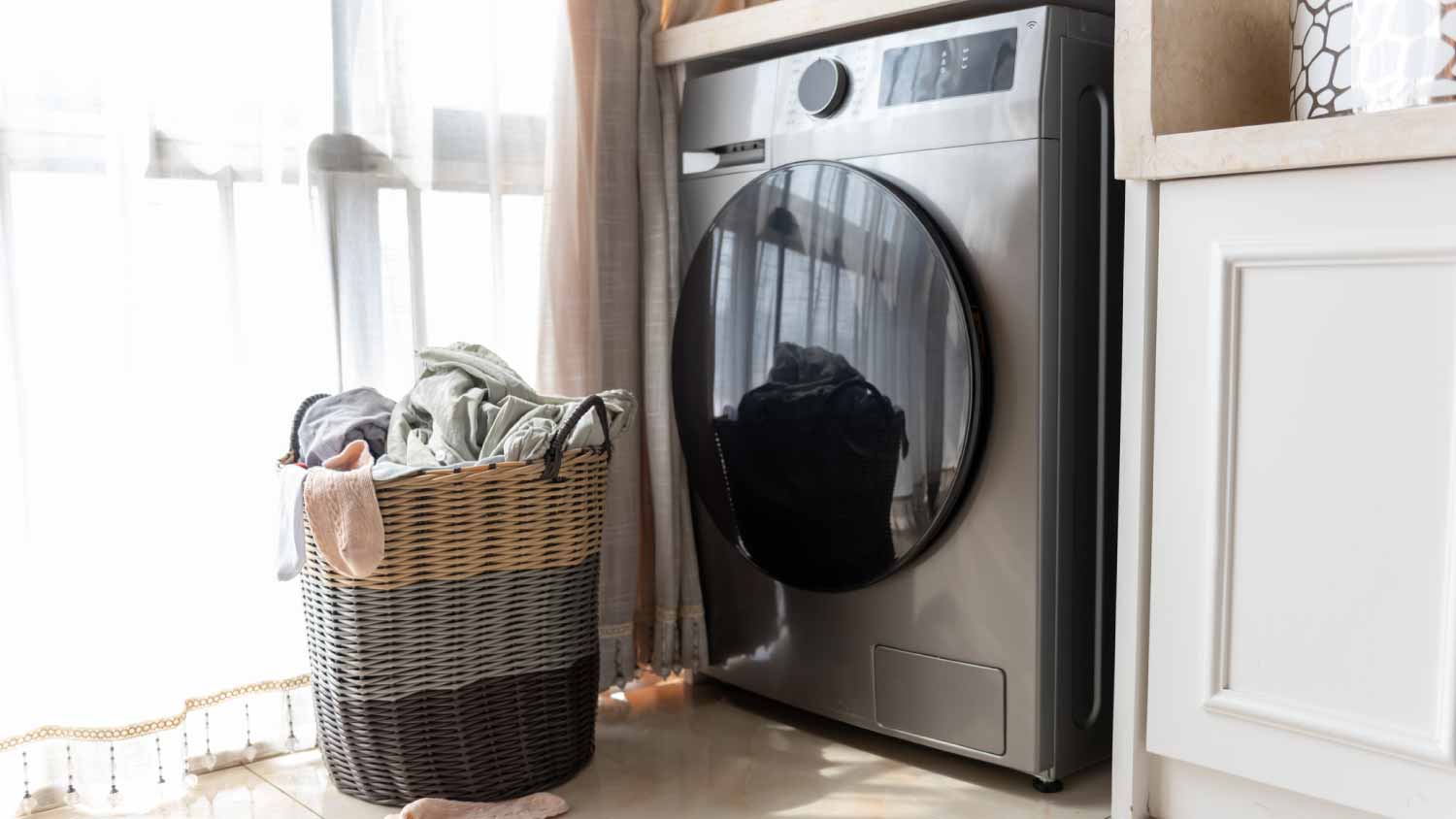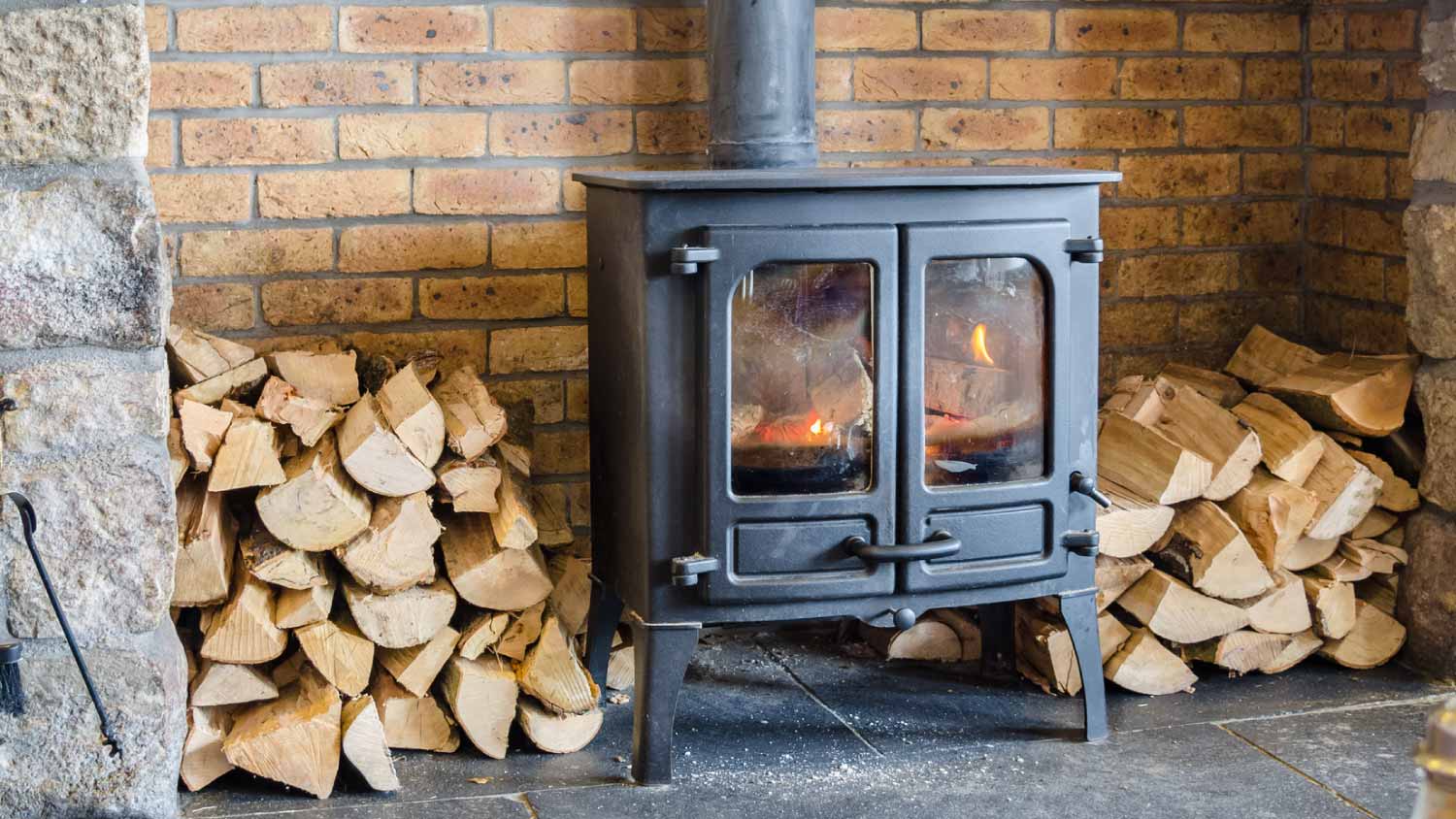7 Types of Dryers and How to Choose One
Decipher the different designs of dryers


There are several options to consider when shopping for a new dryer. Each of the different types of dryers available has its own pros, cons, and costs. The main features to consider are a dryer’s loading position, the power source, and whether it has vents. Learn about seven different dryer types to determine which one will work best for your needs.
| Type of Dryer | Key Feature |
|---|---|
| Electric | Easy installation |
| Gas | Costs less to operate |
| Front-Load | Can stack on washer |
| Top-Load | Uncommon design |
| Vented | Efficient operation |
| Ventless | Good for apartments |
| All-in-One | Washer-dryer combo |
1. Electric Dryer

Electric dryers are among the most common types of dryers. Modern models can almost match many of the traditional advantages of gas dryers. Electric dryers cost less upfront and tend to last slightly longer than gas dryers. They are easier to install with a lower installation cost, but you do need a special 220-volt or 240-volt electrical outlet available to power it.
| Pros | Cons |
|---|---|
| Easy to install | Costs more to run |
| Costs less upfront | Drying takes longer |
| Improved new designs | Needs special outlet |
Best for: Those who want a simple, inexpensive installation.
2. Gas Dryer

Gas dryers have a slightly higher upfront cost, but they deliver benefits like faster drying times and more specific temperature selections than electric dryers. Running a gas dryer often costs less per load than running an electric dryer. Even though the dryer runs from natural gas, you will need a nearby standard 120-volt electrical outlet and a venting option.
| Pros | Cons |
|---|---|
| Faster drying time | Tougher install |
| Costs less to operate | Costlier upfront |
| Accurate temps | Requires a venting system |
Best for: Those who want better operational performance in a dryer.
3. Front-Load Dryer

A front-load dryer is an extremely common design because of the way the horizontal drum spins to help with the drying process. The horizontal drum makes it more energy efficient than a top-load dryer design. You can stack a front-load dryer over a front-load washer to save space in the laundry room.
| Pros | Cons |
|---|---|
| Very common design | May require bending |
| Stackable on washer | Can be expensive |
| Lower upfront cost | Bad for narrow rooms |
Best for: Those who want to stack the washer and dryer.
4. Top-Load Dryer

Top-load dryers are extremely rare, so they can be pricey. The vertically-aligned drum is far less energy efficient when drying clothes than the horizontal drum in the front-load dryer. However, if you have a top-load washer, you may prefer a matching dryer design. They also are nice to have in a narrow room where you have limited space to open a front-load dryer door. If you have a bad back that makes it tough to bend over, a top-load dryer may be easier to use.
| Pros | Cons |
|---|---|
| No bending over | Uncommon design |
| Door opens upward | No stacking option |
| Matches washer design | Not energy efficient |
Best for: Those who want to match a top-load washer design.
5. Vented Dryer

A vented dryer is a common drying machine design. It moves the damp air generated during the drying process through a vent duct tube inside the walls and out of the home. As long as you have the vent duct installed inside your walls already, installing a vented dryer is straightforward. You do need to clean the vent duct tube annually to ensure safe operation. Dryer vent cleaning costs about $145.
| Pros | Cons |
|---|---|
| Efficient drying | Vents need cleaning |
| Common design | New vent is pricey |
| Easy to install | Clogs are possible |
Best for: Those who already have a vent duct tube inside the walls
6. Ventless Dryer

The ventless dryer does not need venting duct tubes to expel moist air. Instead, it uses condensation to collect moisture during the drying process, expelling it with a drain hose or storing it inside a removable tank. Ventless dryers are not highly efficient and cost more to operate. If you are using the dryer in a non-traditional location, like a closet, the ventless driver is a good choice, though.
There are two main types of ventless dryers: condenser dryers and heat pump dryers. A condenser dryer heats air with a condenser. The hot air dries the clothes and returns to the condenser as moist air, which the condenser cools. From there, the water vapor turns to water and drains out of a drain pipe.
A heat pump dryer is an energy-efficient electric dryer that pulls air from the room and heats it with coils to dry the clothes. Afterward, the air passes over cool coils and through an evaporator to remove the moisture, which is then stored in a tank.
Are Heat Pump or Condenser Ventless Dryers Better?
While both heat pump and condenser dryers offer a ventless option for homeowners, a heat pump dryer is usually preferable to a condenser dryer because of its energy efficiency. Heat pump dryers dry clothes through lower heat settings for longer cycles, which saves energy and produces less wear and tear on your favorite clothes.
Condenser dryers are better for faster drying cycles, but those higher drying temperatures can put more stress on fabrics and also use more energy.
| Pros | Cons |
|---|---|
| No duct vent needed | No gas dryer options |
| Easy installation | Must drain regularly |
| Use almost anywhere | High operating cost |
Best for: Those who live in a rental with no vent duct system.
7. All-in-One Dryer and Washer

The all-in-one design includes both a washing machine and a dryer in one unit. This unit saves space versus needing two separate appliances. You can set the washing and drying cycles at the same time, and the machine automatically does both back to back. This means you don’t have to worry about forgetting about a pile of wet laundry inside the washer.
With this option, you don’t need dryer venting duct work because all-in-ones use ventless designs. This appliance is pricey, though—sometimes pricier than buying two separate machines. Drying also takes longer because of the ventless design.
| Pros | Cons |
|---|---|
| Space-saving design | Pricey upfront |
| One cycle for both | Costs more to run |
| No need for vent work | Drying takes longer |
Best for: Those who want a space-saving design for a small laundry room.
How Do I Choose the Right Type of Dryer?
Finding the right type of dryer for your needs can seem challenging because of all the different combinations possible. Think about the two or three most important features you want in your laundry appliance, and you then can match your needs with the best design. Here are some tips you can use to help you choose the right type of dryer.
Gas vs. Electric
Choosing a gas versus electric dryer usually comes down to the type of hookups you have available. If you already have gas hookups available, it’s easy to connect a new gas dryer. The cost of adding a gas line to serve a dryer is about $540.
Front-Load vs. Top-Load
If you have a small laundry room and need stackable machines, a front-load dryer is a must. However, if you have a top-load washer and you want the two appliances to match, you may seek a top-load dryer. Top-load dryers are harder to find, though—manufacturers rarely offer them.
Ventless vs. Vented
Choosing a ventless versus vented dryer often involves considering whether you have a vent duct tube available. Installing a new dryer vent duct inside the walls can cost $200 to $500. If you live in an apartment or a rental home where you cannot install a new dryer vent duct, a ventless dryer may be your only option.
Can I Repair or Install a Dryer Myself?
Although you can repair a dryer yourself, it can be a challenging process. If you don’t understand how the different parts of a dryer work and where they’re located, fixing them is going to be a challenge.
A local dryer repairperson is going to have the ability to diagnose the problem quickly by running diagnostic tests, checking error codes, and calling on experience with past repairs. This usually allows the repair process to go faster than if you are doing a DIY repair.
If you choose to do a dryer installation yourself, you must be certain you have the right connectors in place, such as a gas line hookup or the right types of dryer plugs. You also need to have the ability to move an old dryer out of place and dispose of it before bringing in the new appliance. If you don’t have a hand truck to help you move the heavy dryer, it can be a challenge to install it yourself.
You could call a local appliance installation company to do the installation for you and simplify the process. Hiring a pro ensures that the installation goes smoothly and eliminates the risk of you dropping the machine or installing it incorrectly and voiding the warranty. The average appliance installation cost range for a dryer and washer together is $50 to $175, although some companies will lower the cost a bit if you only want a dryer installed.



.jpg?impolicy=leadImage)

- Appliance Repair Companies
- Washing Machine Repair
- Dryer Repair
- Refrigerator Repair
- Dishwasher Repair
- Oven Repair
- Wood & Pellet Stove Repair
- Freezer Repair Services
- Wood Stove Services
- Gas Stove Repair
- Emergency Appliance Repair Companies
- Ice Maker Repair
- Gas Appliance Repair
- GE Appliance Repair
- GE Refrigerator Repair
- GE Dryer Repair
- GE Dishwasher Repair
- GE Washing Machine Repair
- Samsung Appliance Repair
- Samsung Refrigerator Repair
- Samsung Dryer Repair
- Samsung Washer Repair
- Samsung Dishwasher Repair
- Samsung Oven Repair
- Whirlpool Repair
- Whirlpool Refrigerator Repair
- Whirlpool Washer Repair
- Whirlpool Dryer Repair
- Whirlpool Oven Repair
- Maytag Appliance Repair
- Maytag Refrigerator Repair
- Maytag Washer Repair
- Maytag Dryer Repair
- Maytag Dishwasher Repair
- Kitchenaid Appliance Repair
- Kitchenaid Oven Repair
- Kitchenaid Refrigerator Repair
- Kenmore Appliance Repair
- Kenmore Dishwasher Repair
- Kenmore Washer Repair
- Kenmore Dryer Repair
- LG Refrigerator Repair
- Bosch Appliance Repair
- Kenmore Refrigerator Repair
- LG Appliance Repair Services
- GE Microwave Repair
- Electrolux Appliance Repair
- Electrolux Washer Repair
- Kitchenaid Dishwasher Repair Services
- Wood Stove Inspection
- Dishwasher Installation
- Trash Compactor Repair
- Who Fixes Dryers? Here’s Who to Call
- 9 Helpful Tips to Prevent Dryer Fires
- How Long Do Dryers Last? Get the Most Out of Yours and Know When to Replace It
- What is a Ventless Dryer? And How Does It Work?
- How a Clothes Dryer Works: From Heat to Tumble
- Who Should You Call to Repair a Dryer Vent?
- Why Your Dryer Won't Start and How to Fix It
- Gas vs. Electric Dryers: Pros, Cons, and Costs
- Who Cleans Dryer Vents? Here’s Who to Call
- Parts of a Dryer: What They Are and How They Work










